More about covers ...
Collectors use the term "cover" to refer to almost anything that went through the mail .. envelopes, postcards, etc. The term comes from the old days, before manufactured envelopes, when the usual way to post a letter was to use an extra sheet of paper as a "cover" that was folded around the letter itself, and sealed with a wafer or a wax seal.
Covers come in two basic types:
- Philatelic covers
- are covers prepared for, or by, collectors specifically for the purpose of collecting. First Day Covers, marking the first day of use of a new stamp issue are just one form of this type of cover. Other philatelic covers include First Flight Covers (marking the first flight of new airmail routes), and Commemorative Covers, which can be created to mark any event the collector thought important. Sometimes these get a following by later generations of collectors, and therefore a good market value, and sometimes nobody cares -- resulting in little to no market value.
- Commercial covers
- includes any cover whose sole purpose was to carry mail -- whether for commercial or personal correspondence. It's a catch-all phrase
that is really used as the opposite of "philatelic", i.e. meaning everything else that was not created specifically for collectors.
People who collect these call themselves "postal historians". They are interested in documenting how the mails worked, what routes were used, how rates changed, how specific stamps were used, what special mail services were available ... all documented by covers that actually experienced the mail.
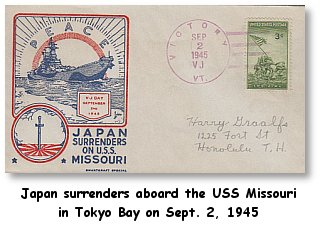
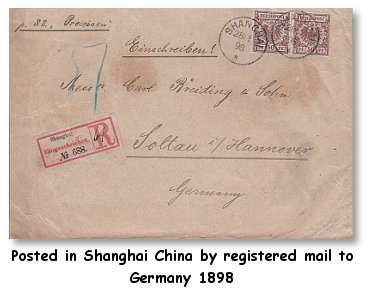
Value?
Value depends on the time period, the countries it came from, the nature of the correspondence and of course the quantity and overall condition. There are no "rules" that can be followed.
It takes years of experience to learn what collectors want, but that's what we do!
We will buy a shoebox full or a room full. It can be amazing how fast the value can add up!
You may wonder why we always talk about "boxes" or "accumulations". The reason is that not all covers are interesting to collectors. Experience has taught us that typically only 5-10% of an original accumulation of covers (that is, not previously selected by a collector) hold any interest. That means that without the quantity to search through, there isn't much chance of finding anything of interest. Of course, if they were already chosen by a knowledgeable collector as being interesting, the odds go up dramatically!
Want to talk about selling your collection or accumulation of covers? See our Sell to us page.
The Story of Great Aunt Martha's Stamp Collection
A fellow called us. His great-aunt Martha had left him her stamp collection. She had been very proud of it. He'd shown it to a couple of stamp dealers, and the opinion was unanimous: nothing in it that couldn't be replaced for a few cents a stamp.
Martha had a lot of fun with it, but never spent any money on it. It turns out her joy was corresponding with other collectors around the world and trading stamps. I asked, "Are there any of the old letters?" Answer was, "Yes, there is a shoebox of envelopes from the years 1920s to 1950s, but no letters in them. I showed them to the other dealers and they said they weren't worth anything because there were no rare stamps on them."
After inspection, we paid $1,000 for that box. The stamp collection was handed down to the next generation to have fun with!
Some other sample purchases
What makes a "market value"?
Market value is a price arrived at between
a knowledgeable seller and a knowledgeable buyer, i.e. both parties know what they have, what it's worth in their eyes,
and they reach an agreement to buy and sell respectively.
Here are some illustrations of "market value" -- collections or accumulations that we have bought from other dealers, or have purchased at auction in competition with other stamp dealers.
Our committment to you as a seller is to offer you a price for your collection that is consistent with what we would pay if we were competing for it at auction, or buying from another dealer.
Want to talk about selling your collection or accumulation of covers? See our Sell to us page.
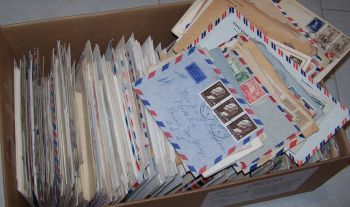
Paid $175 for this box of envelopes from a family correspondence (no letters included), mostly from Europe in the 1950s. |
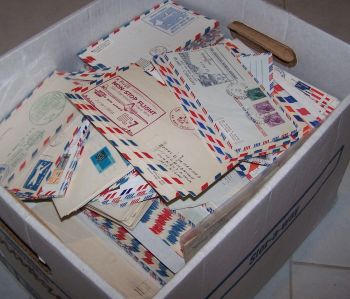
Paid $650 for this box of special commemorative airmail envelopes from the 1920s-30s. |
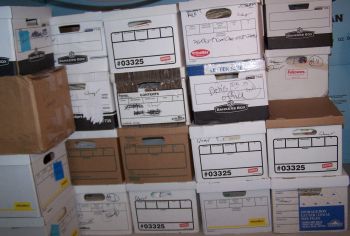
Paid $2000 for this pile of boxes filled with envelopes from foreign countries (no letters). |
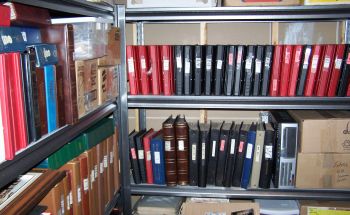
Part of a large First Day Cover collection for which I paid $9000 ! |
Envelopes or letters, which?
I am frequently asked, "Are you interested in the envelopes or the letters inside?" The answer is, "Both".
95% of the time, the letters are of no consequence (only direct descendents are interested in the family gossip of 100 years ago), so it doesn't matter if they are there or not. If they are included, they add a feeling of "completeness" to the package of envelope and letter, which can help the value a little. In these cases, the main part of the value comes from the envelope itself -- where it is from, how it was used in the mail etc.
Sometimes, though, the letters themselves have historical significance -- eyewitness accounts of important historical events, soldiers' letters from the US Civil War, letters from significant historical personages. In these cases, the letters are generally more important to the value than the envelope.
Ready to talk about selling your collection or accumulation of covers? See our Sell to us page.
